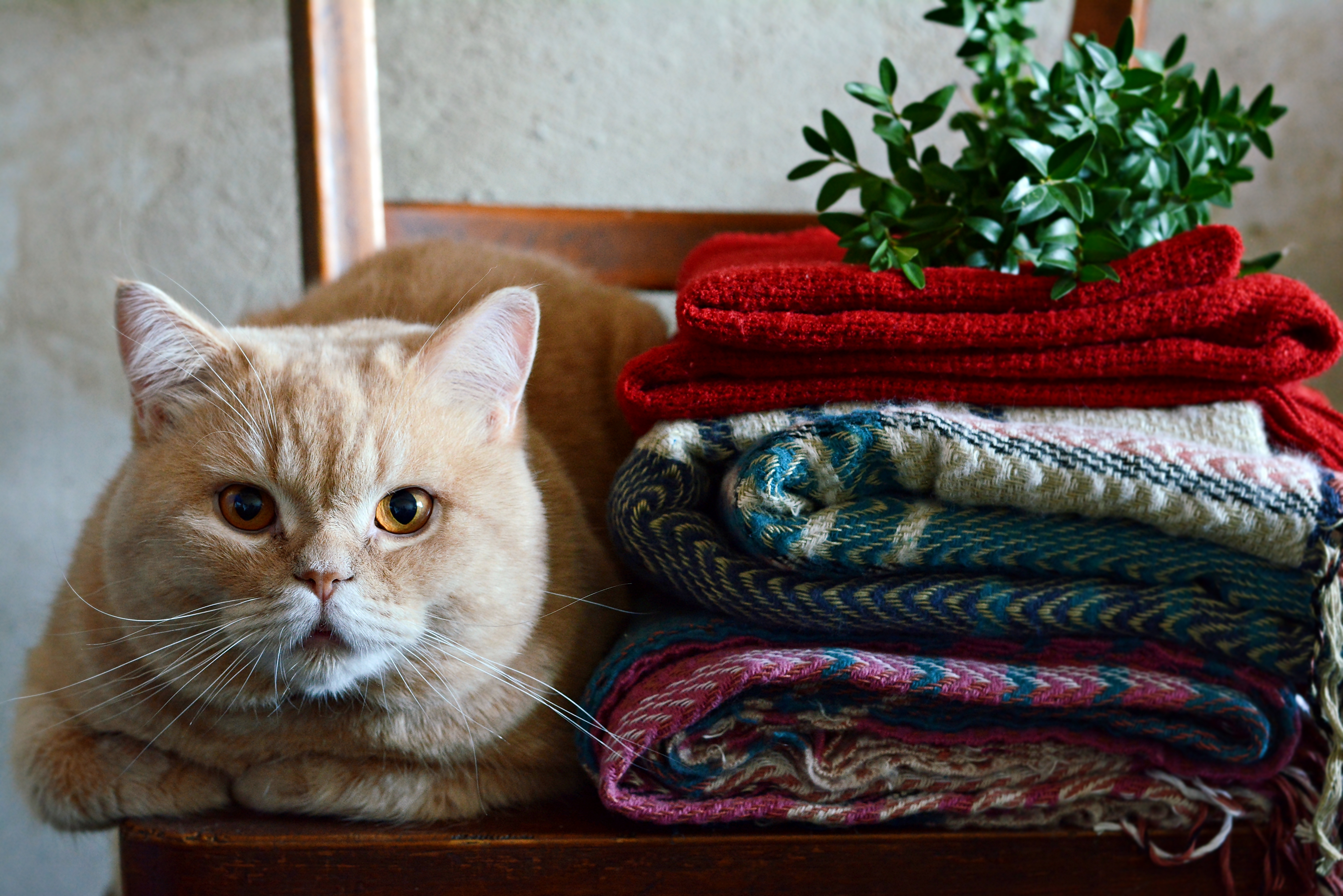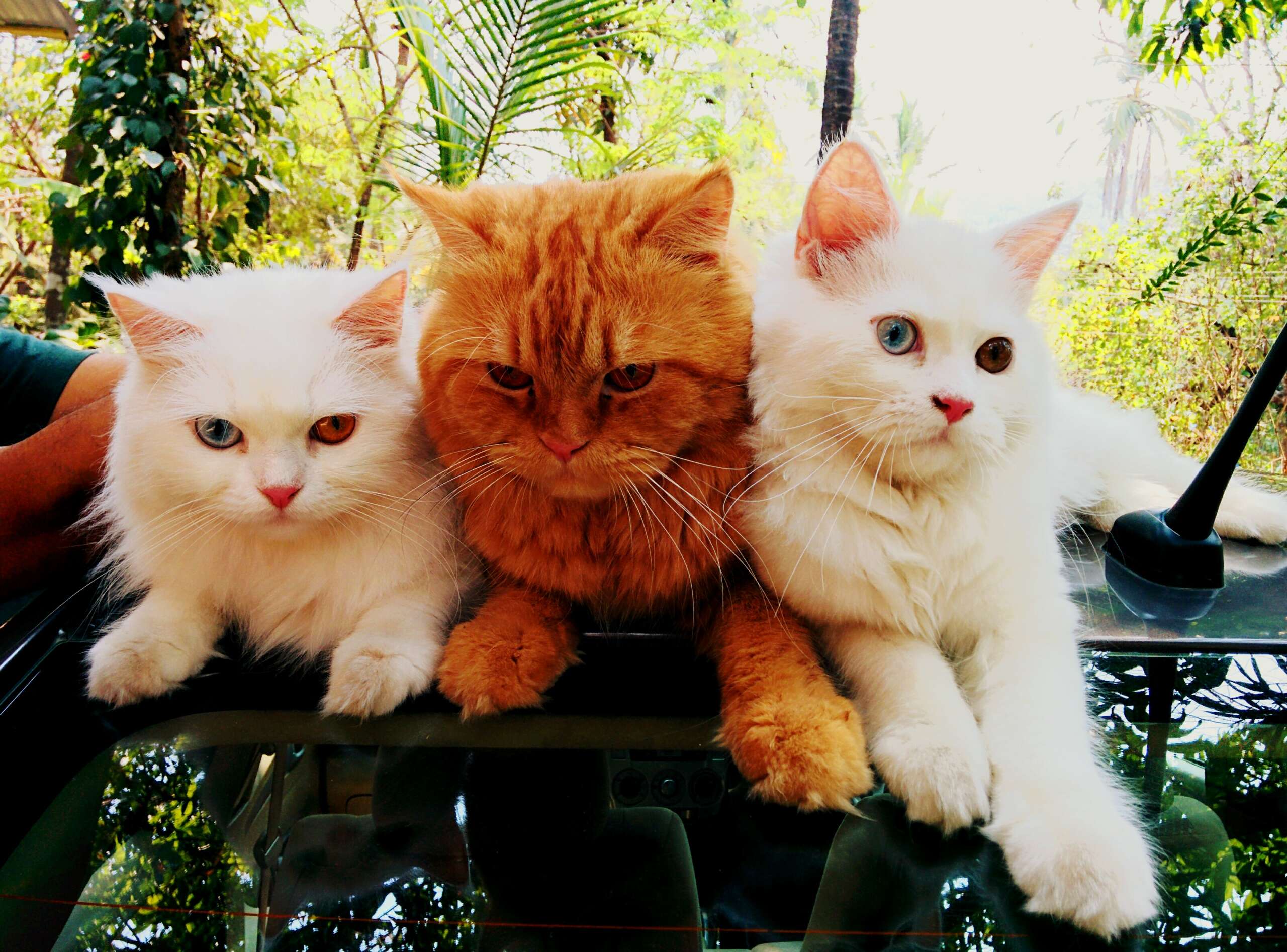Share This Article
The world of cats is full of Cat’s Coat Colors and Patterns. Each one tells a story of genetics. From the shiny black fur of Bombay cats to the detailed Tabby Cats Aesthetic, every cat is unique.
Cats’ fur is not just random. It’s made from a mix of genes. There are cats with no fur, short fur, and long fur. Sadly, about 75% of white cats might be deaf because of their genes.
Chocolate fur is rare but beautiful. It’s seen in some Havana Brown cats. Patterns like bicolor vests and calico show off a cat’s genetic makeup. These patterns are mostly seen in female cats.
Every cat’s fur is special. From the British Shorthair’s lilac color to the Persian’s long hair, each cat is a masterpiece. Understanding their fur helps us appreciate their genetics and care for them better.
Cat Genetics and Coat Color Basics
Exploring Cat Genetics shows a complex mix of hereditary factors. These factors create the wide range of fur colors in domestic cats. At the heart of these colors are the Coat Color Basics, where genes mix to create feline beauty. Cats have 38 chromosomes, with each gene crucial for their coat colors.
The Black Cat and Grey Cats stand out with their unique colors. These colors come from dominant and recessive genes. For example, a dominant black gene can hide other colors, except when a cat gets recessive genes from both parents, leading to lighter shades.
The dilution gene changes black to blue, creating grey cat shades. This shows how Cat Genetics can be delicate and complex.
Genetics also explain how colors evolved. Cats first had orange and black, with modifiers like chocolate and cinnamon. The white spotting gene adds more complexity, affecting how much white a cat shows. This gene works separately from the X or Y chromosomes, adding to the diversity.
Learning about cat genetics is fascinating for cat lovers. It helps breeders and vets predict coat colors and health issues. This knowledge makes each cat’s coat a natural masterpiece.
An Exploration of Solid Cat’s Coat Colors
Solid coat colors in cats are truly stunning. They range from the captivating black cat to the spotless white cat. The grey cats add a touch of subtlety to the mix. These colors come from specific genes, making each cat unique.
The black cat gets its color from a dominant gene. This gene controls how much eumelanin is produced, leading to the deep black color. On the other hand, the rare chocolate or brown coats come from a mix of genes.
These rare colors are found in breeds like the Havana Brown and the Burmese. The lilac and fawn colors, seen in breeds like the British Shorthair and Oriental Shorthair, also come from specific genes.
White cats are striking, thanks to their dominant white gene. This gene can cause unique eye colors and sometimes hearing loss. The genetics behind grey cats are interesting too. They have a diluted version of the black gene, giving them a silverish look.
Even though solid coat colors look simple, their genetics are complex. This complexity makes them fascinating. Cat lovers and breeders find these colors irresistible, shaping their choices and competitions.
Each color, from the black cat to the white cat, and the grey cats, brings something special. They add to the diversity of cats, making them a joy to be around.
The Mystery of Tabby Cats: Patterns and Prevalence
Tabby cats are known for their unique patterns and wide genetic variety. They come in mackerel, classic, spotted, or ticked patterns. These cats have stripes or swirls and an ‘M’ shape on their forehead, making them a favorite.
These patterns help tabby cats blend into their surroundings. It’s a skill passed down from their ancestors. This camouflage ability is fascinating.
Tabby cats come in many colors, like the bright Orange Tabby Cats. They can be a vibrant ginger or a softer cream. Their colors are admired for their beauty and energy.
Orange Tabby Cats are often seen as friendly and lively. Their color might even influence their behavior.
Tabby patterns are found in many breeds, from the Maine Coon to the Abyssinian. This shows a common trait in cats. Tabby cats are not just for certain breeds; they are found in many mixed-breed cats too.
The Tabby Cats Aesthetic is more than just looks. It also affects how quickly they get adopted. People are drawn to their unique coats, leading to faster adoptions.
Understanding tabby cats helps us appreciate them more. It also helps us make better choices when adopting a pet.
Fascinating Bicolored and Tuxedo Coats in Cats
The beauty of bicolored cats and tuxedo coats goes beyond looks. It’s tied to genetics and history. Bicolored cats have a striking contrast between deep colors and white, thanks to a special gene.
This gene causes different amounts of white on their fur. A “true bicolor” cat has a clear line between colors, showing mostly 50%-75% color.
Tuxedo coats in cats are a symbol of elegance. They often have black and white fur, looking like they’re ready for a fancy party. But, they can also be gray, orange, or even black and yellow.
The secret to their sharp colors is the white spotting gene. It creates a beautiful contrast that grabs your attention.

These cats have been loved for centuries, even in ancient Egypt. They were seen as lucky. Today, they’re still popular, thanks to their looks and roles in media like Sylvester and Felix the Cat.
But their charm goes beyond looks. Their color doesn’t affect their personality or behavior. It’s their unique look that makes them special and adds to their mystery.
Cat’s Coat Colors: Delving into Shades of Black, Orange, and White
The colors of a cat’s coat are more than just pretty. They show a complex mix of genetics. The Black Cat has a deep color that might help it stay healthy. This color comes from a special gene called (B).
The Orange and Yellow Cat is bright and lively. Its color comes from a gene on the X chromosome. This is why more males have this color.
The Yellow White Cat and the White Cat have a hidden color. This is because of a dominant white gene. Sometimes, you can see the cat’s true color in kitten hairs.
Learning about cat colors is not just about looks. It also tells us about their health and traits. For example, white cats might be more likely to be deaf. But Black cats might be healthier because of their color.
Exploring cat colors helps us appreciate their beauty and understand their genetics. Each color, like Black, Orange and Yellow, or White, has its own special traits. These traits affect how the cat looks and feels.
The Unique World of Calico and Tortoiseshell Cats
The world of Calico Cats and Tortoiseshell Cats is full of color and wonder. It shows us the complex genetics behind their beautiful coats. This knowledge helps us appreciate these cats even more.
Genetically, Tortoiseshell Cats have orange and black patches. Calico Cats have a tricolor pattern of white, black, and orange. These colors are mostly seen in females because they have two X chromosomes. Each X chromosome can carry a different color gene.
Learn more about genetics and how these cats get their colors. The mix of these genes creates the unique patterns we see.
Male Calico or Tortoiseshell cats are very rare. They usually can’t have kittens because of their genetic makeup. This shows how special their coat colors are.
The white in Calico Cats comes from a gene called piebalding. This gene makes patches without color. Tortoiseshell Cats, on the other hand, have a mix of black and orange without white spots.
The size and shape of the color patches depend on the white spotting gene. This gene affects how the colors look on their coats.
Black and Yellow Cats get their colors from the same genetic influences as Tortoiseshell Cats. The yellow patches show the recessive orange gene. This gene breaks up the dominant black color.
Understanding the genetics of Calico and Tortoiseshell cats is fascinating. These cats are not just beautiful; they are a wonder of genetic diversity. For more information, check out these resources.
Dilutes and Modifiers: Understanding Faded Fur Colors
The world of cat coat colors is fascinating, especially with dilution genes. For those who love Grey Cats, Brown Cats, or a Yellow Cat, knowing about dilution modifiers is key. It helps us understand these beautiful color variations.
Dilute genes (d) and modifiers (Dm) are at the core of these colors. They change the bright, dense colors of a cat’s coat to softer shades. For example, a Grey Cat starts with black genes but turns into a soft grey through the dilute gene.
Brown Cats also have a similar transformation. Their dark base turns into a warm, earthy brown. The dilute modifier (Dm) can make this color even lighter, making each cat’s fur special.
Yellow Cats show an enchanting change from vibrant orange to creamy yellow. This change is due to a complex genetic process. The exact shade of yellow can vary greatly among cats, making each one unique.
Knowing about these genetics is interesting for cat owners and breeders. It helps predict coat colors in future litters. This knowledge is crucial for breeding cats or just enjoying their colors.
In conclusion, the colors of Grey Cats, Brown Cats, and Yellow Cats are not just beautiful. They are also complex and tell a story of nature’s craftsmanship.
Color Point Coats: The Beauty of Siamese and Tonkinese Patterns
The Color Point Coats of Siamese and Tonkinese cats are truly stunning. These patterns are a result of complex genetics. They lead to a wide range of colors and patterns in these breeds.
In Siamese cats, there are four main colors: seal, chocolate, blue, and lilac. But, enthusiasts have found 32 different coat colors and patterns. The Colorpoint Shorthair adds 16 more colors, showing the breed’s amazing variety.
Other breeds also have unique point colorations. For example, Birman cats have four main colors. Tonkinese cats come in natural, champagne, blue, and platinum, with solid, mink, and pointed patterns.
These colors come from genes that darken cooler body parts. This creates a beautiful contrast. The classic image of a Yellow White Cat with stark points is especially captivating.
Siamese Patterns are unmatched in charm and popularity. The Seal Point is a classic, with a cream body and dark seal-brown extremities. The variety includes soft ivory, warm chocolate, and deep blue points.
There’s also the rare Lynx and Tortie Points. These patterns range from the Red Point’s warm-white body to the Foreign White’s purity. This variety shows the beauty and gentleness of Color Point Coats, making Siamese and Tonkinese cats special.


